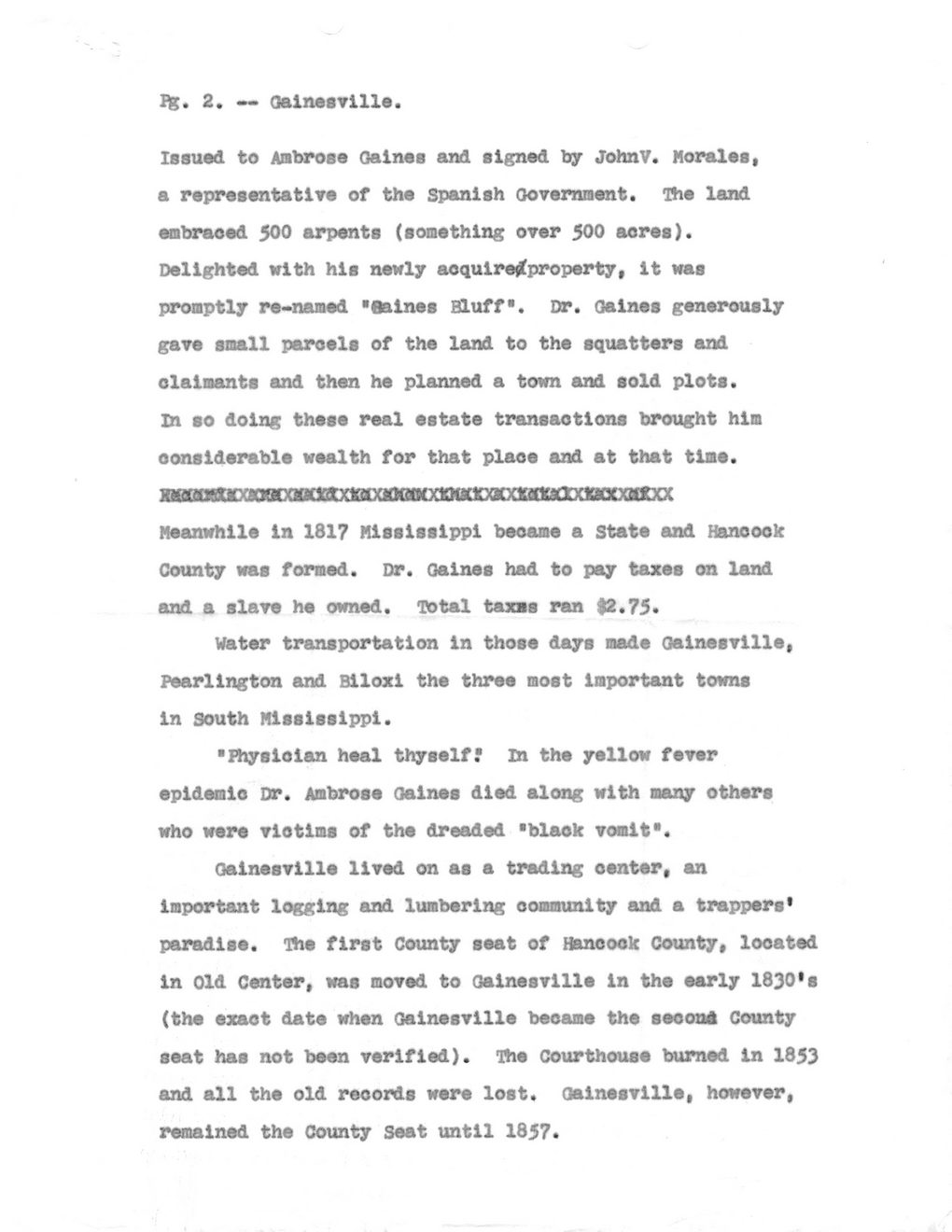This text was obtained via automated optical character recognition.
It has not been edited and may therefore contain several errors.
Ife. 2. — Oainesville. Issued to Anbrose oaines and signed by JohnV. Morales, a representative of the Spanish Government. The land embraced 500 arpents (something over 500 aores). Delighted with his newly aoquirejlfproperty, it was promptly re-named "Baines Bluff*. Dr. Oaines generously gave small parcels of the land to the squatters and claimants and then he planned a town and sold plots, m so doing these real estate transactions brought him considerable wealth for that plaoe and at that time. IMfWmiOBIXMKtttXttXitlOIICXPBaDaCX^ Meanwhile in 1817 Mississippi became a state and Hancock County was formed. Dr. Oaines had to pay taxes on land and a slave he owned. 'Total tans ran |2.75» water transportation in those days made Oainesville, Pearlington and Biloxi the three most important towns in South Mississippi. ■ftiysioian heal thyself? m the yellow fever epideoio Dr. Ambrose Oaines died along with many others who were viotims of the dreaded "black vomit". Oainesville lived on as a trading oenter, an Important logging and lumbering community and a trappers' paradise. Hie first County seat of Hancock County, located in Old Center, was moved to oainesville in the early 1830's (the exact date when Oainesville became the seooni County seat has not been verified). The courthouse burned in 1853 and all the old records were lost. Oainesville, however, remained the County Seat until 1857*

Gainesville Dear-old-Gainesville---Pilet-2